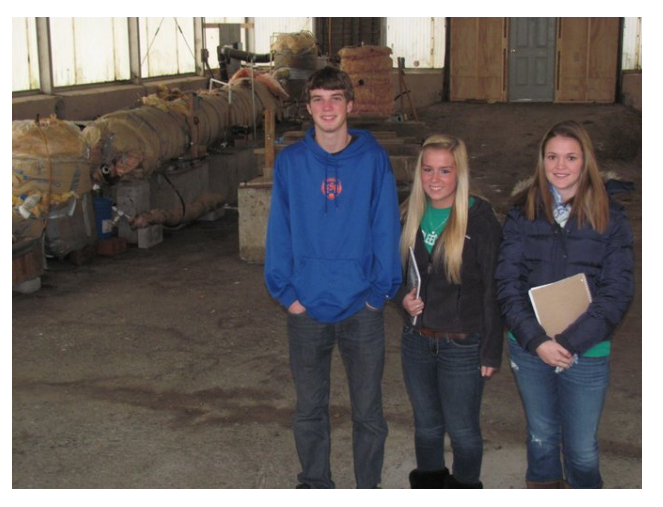Recent Headlines
- SUNY ESF Summer Science Week at the MOST
- SUNY ESF Wins Grant to Create Climate Action Research Exchange and Study Abroad Program with University in Colombia
- ESF WEATHER ALERT: Tornado Watch; Please leave campus now
- ESF Researchers Receive $546,000 NYS Grant to Analyze Environmental Impact of Wood Products

East Syracuse-Minoa students research alternative energy at village facility
Students will take part in an effort to turn waste into gain, thanks to a hands-on class offered at East Syracuse-Minoa High School.
These students are participants in “SUNY ESF in the High School: Global Environment,” a class offered by science teachers Pam and John Herrington that began five years ago at ESM after lobbying on the part of Pam, an alum of the State University of New York College of Environmental Science and Forestry. Much of the class takes place at the village of Minoa’s Waste Water Treatment Facility.
“This is a real buy-in for the students,” Pam said. “They learn problem solving, project management, time organization — they really are learning life skills while collecting data and discussing what it tells them.”
“High school students get to work in an environment where they are doing things like
taking nitrogen levels in the wetlands — things that no one else is doing,” said Minoa
Waste Water Treatment Facility Director Steve Giarrusso.
The goal for the village is to make it sustainable, according to Giarrusso, which
is sparking research into using an anaerobic digester to turn solid waste into energy.
“For instance, let’s say to run one reactor costs $80,000 looking to offset that by running a digester and try to not only provide energy, but put energy back into the grid,” Giarrusso said.
He added that the research is not being done with taxpayer money.
“Everything we’re doing down here is with grant money and intermunicipal agreements,”
he said. “We are making this self-sufficient and sustainable, and we want to make
it more profitable.”
There are many research projects going on at the facility, and students are benefiting from becoming involved.
“For instance, [SUNY ESF Assistant Professor] Klaus [Doelle] has the students working on a new way of doing hydropower using a vortex, or tub drain generator,” Giarrusso said. “Another thing we are doing is teaching them problem solving. We had a reactor that had a problem, and discussed it with the students. They were able to figure out how to change and modify it so it would work.”
Among the many projects in which the students are involved is the anaerobic digester, which promotes a zero waste outcome by making a bio solid fuel source or fertilizer.
“We are in the beginning stages,” said Mallory Petterelli, a senior at ESM. “We just started at the beginning of September, and to run the digester we need compost, so we have been gathering food waste from the schools. We also have them gathering paper waste to make into pellets.”
Fellow senior Danielle Hobb said the project is very interesting.
“We are learning how to save money and help the community,” she said.
“It’s a way to be involved in research before college,” said Kyle Scanlon, an ESM
senior who has visited the campus at SUNY ESF and may choose to attend school there.
“It puts us ahead in our education.”
Petterelli said she and her classmates will get three college credits for completing the course.
“We also get other experience, such as when we did a presentation on composting and differentiating it from recycling at Pine Grove and Woodland Elementary,” she said.
Looking to the future, Giarrusso said students will have another project on the horizon.
“We are currently working with a compost pile with a water tank beneath it,” Giarrusso said. “Coils run through the pile into the tank, heating the water. Eventually, this water will be used to heat a greenhouse, so they could be growing raspberries in the winter."